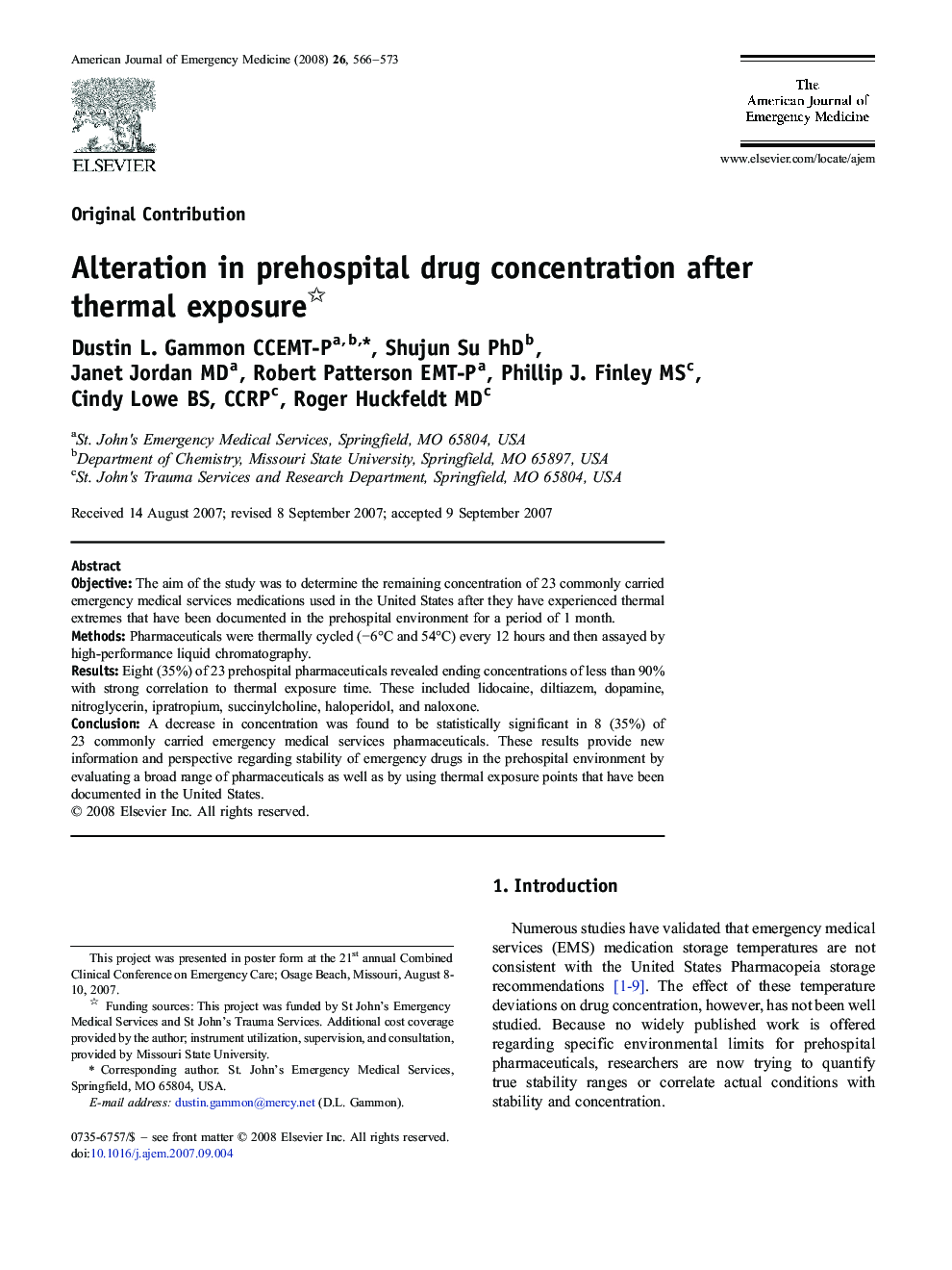| کد مقاله | کد نشریه | سال انتشار | مقاله انگلیسی | نسخه تمام متن |
|---|---|---|---|---|
| 3227357 | 1588176 | 2008 | 8 صفحه PDF | دانلود رایگان |

ObjectiveThe aim of the study was to determine the remaining concentration of 23 commonly carried emergency medical services medications used in the United States after they have experienced thermal extremes that have been documented in the prehospital environment for a period of 1 month.MethodsPharmaceuticals were thermally cycled (−6°C and 54°C) every 12 hours and then assayed by high-performance liquid chromatography.ResultsEight (35%) of 23 prehospital pharmaceuticals revealed ending concentrations of less than 90% with strong correlation to thermal exposure time. These included lidocaine, diltiazem, dopamine, nitroglycerin, ipratropium, succinylcholine, haloperidol, and naloxone.ConclusionA decrease in concentration was found to be statistically significant in 8 (35%) of 23 commonly carried emergency medical services pharmaceuticals. These results provide new information and perspective regarding stability of emergency drugs in the prehospital environment by evaluating a broad range of pharmaceuticals as well as by using thermal exposure points that have been documented in the United States.
Journal: The American Journal of Emergency Medicine - Volume 26, Issue 5, June 2008, Pages 566–573